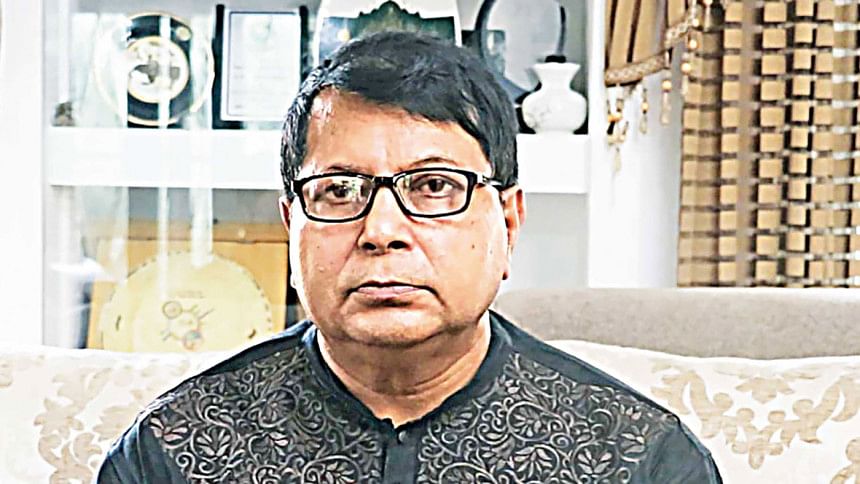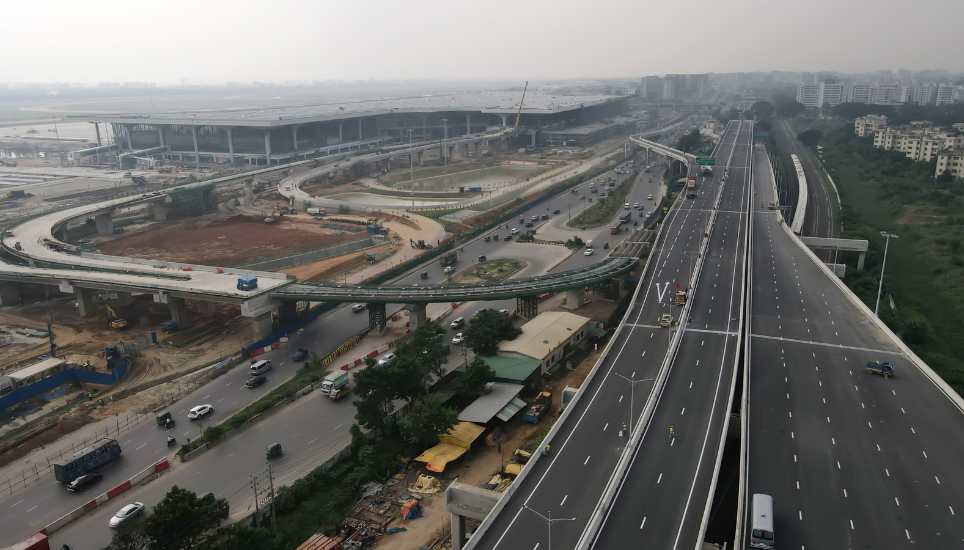“The Dhaka Elevated Expressway introduces a unique feature with its ramps and main structure built adjacent to the road”
In conversation with Dr. Md. Shamsul Hoque, Professor at the Department of Civil Engineering, BUET.
The Daily Star (TDS): How does the strategic vision behind the Dhaka Elevated Expressway project align with the broader goals of improving public transport and mitigating congestion in the city?
Shamsul Hoque (SH): When the government embarked on this initiative, it had a multidimensional and strategic purpose in mind. As part of the strategic transport plan recommended for Dhaka's public transport system, three BRT (Bus Rapid Transit) and three Metro lines were planned for operation. The primary objective of the Dhaka Elevated Expressway was to divert traffic and alleviate congestion in these large-scale urban areas. Additionally, there was a concept that constructing a new roadway on available land, separate from our existing roads, could provide substantial relief. This roadway would be especially advantageous for commuters traveling between Motijheel and Uttara, as well as for trucks engaged in vital economic activities. Consequently, the plan was conceived to enable these trucks to bypass vertically rather than horizontally, ensuring that both the industrial sector and local passengers traveling from Motijheel to Uttara could do so effortlessly.
With the ongoing development of residential areas like Purbachal, Uttara, and Uttara 3rd phase in these specific zones, envisioning a scenario where passengers utilize the upper level of the road would create a win-win situation, facilitating smooth travel without the burden of traffic jams.
TDS: What were the strategic considerations that led the government to utilize railway lands for the Dhaka Elevated Expressway project?
SH: The underlying strategy of this plan was exceptionally strategic, as the government opted to utilize railway lands, given the limited scope for new road construction in Dhaka. Consider the possibility of obtaining the right of way from the railways without disrupting their existing routes. Railways often lack the right of way in their areas. Therefore, if the Elevated Expressway could be constructed on two pillars in an area where railways have relinquished their right of way, it would secure a permanent claim to this land. This, in turn, would indirectly benefit the railway system.
The Dhaka Elevated Expressway project was meticulously designed to safeguard the railway's land rights. However, the current reality differs for various reasons. Delays in project implementation have been substantial, making it untimely to assess the project's impact at this juncture. While a partial opening is set to commence, the original plan aimed to create a vertical bypass for Dhaka. Initially, few would utilize it, and movement would primarily be local. Hence, it is premature to evaluate its effectiveness.
Suppose this Expressway can eventually connect from Kutubkhali to the Airport and ultimately to Ashulia. In that scenario, both passengers and trucks could leverage the Expressway, offering the potential for positive outcomes. If individuals receive services in exchange for a fee, they would undoubtedly explore this option, representing the potential of the Dhaka Elevated Expressway.

TDS: What factors contributed to the significant delays in completing this project?
SH: This project operated under the PPP (Public-Private Partnership) model, which was relatively new for us, lacking the necessary experience and mindset. Executing PPP projects involves a complex process that often requires foreign direct investment (FDI), along with the temperament and support from various levels of stakeholders, which we initially underestimated. PPP projects also come with strict time constraints since their funding relies on banks. Time and finances are closely intertwined.
Regarding the Dhaka Elevated Expressway Project, it was anticipated that land issues would be free of encumbrances, as it was believed that the Railways solely owned the land. However, the presence of numerous ramps added complexity. Initially, the government had substantial interest in the project until 2013, ranking it as the second priority after the Padma Bridge. But changes occurred after the formation of a separate Railway ministry, which raised questions about the project's use of railway land.
We were unaware of the stringent 42-month completion timeline, which was tied to bank equity. In contrast, Indonesia completed its 20 Km Expressway in 2021, featuring 5 km of underground sections, demonstrating the challenges of constructing underground infrastructure in a live traffic environment.
TDS: What distinguishable features does the Dhaka Elevated Expressway bring to the city's infrastructure?
SH: The Dhaka Elevated Expressway introduces a unique feature with its ramps and main structure built adjacent to the road, a novel approach in design. While it embraces modern technology, it requires additional measures for ramp management. Our configurations have been well thought out, aiming to minimize disruption to existing roads. While the Expressway doesn't physically encroach upon the streets, its operational conditions could attract more traffic, raising concerns about congestion and pedestrian safety.
Moreover, the effectiveness of the tolling system is critical. A digital tolling system is essential to prevent potential delays. Traditional toll collection methods are time-consuming and could lead to long vehicle queues at the toll collection points, potentially creating congestion hotspots on the Dhaka Elevated Expressway.
The interview was conducted by Priyam Paul
Source: www.thedailystar.net
